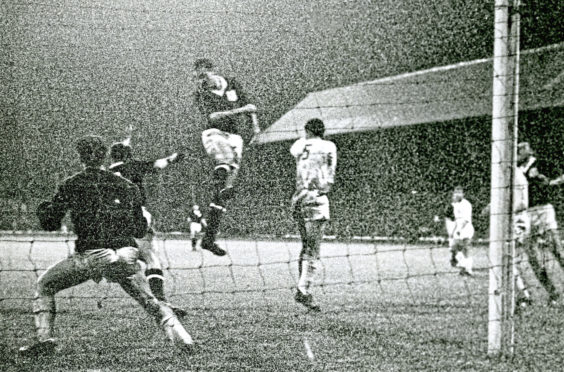Is heading the ball in football a doomed art?
The SFA are contemplating a ban on the practice in under-12 football, which makes me wonder if the direction of travel may be to an eventual outright ban.
The art of heading has had many noted practitioners. Denis Law, the late great Billy McNeill, along with Dundee and United legends Alan Gilzean and Paul Hegarty, are all men who mastered the magnificent art of hanging in the air with sublime timing to power the leather ball net-wards, or to safety.
The spring, poise, and sheer power encapsulated in watching each of them leap to meet a ball was awesome.
A few weeks ago, one of the finest football players ever to grace a field, Ronaldo, gave a stunning exhibition of a perfect headed goal for Juventus, which contained all the majesty and athleticism which the headed ball can comprise.
A magnificently timed run, a perfectly executed leap, the straining extension of the neck muscles, with eyes glued to the ball like a hungry lion to a wildebeest’s neck, and finished with an almost balletic descent to land safely as the ball bulged the net.
His gravity-defying explosion, two-and-a-half metres into the air, to connect head and ball marks him out as perhaps the finest ever exponent of the skill.
It was a glorious piece of football for those of us who enjoy a part of the game which is as much a key component as tackling and dribbling.
However, the safety of children cannot be compromised and if scientific evidence is pointing to a real and present danger for kids, then it is eminently sensible to leave the practice of heading until they are older.
The skill in heading of course comes not just in the connection with the ball. Learning to position oneself and defend from injury in the contest are crucial components of mastering the ability too.
Voluntary assumption of risk is a vital part of all contact sports but children shouldn’t be the ones making that decision.
The adults in the room have to decide, and the old: “It never did me any harm arguments” may well be seriously and medically misguided as new evidence comes to light.
Banning the practice of heading and allowing younger kids to concentrate on the full range of skills on the ground makes better sense if there’s any doubt at all about the safety of heading a ball.
Balls made of much lighter materials can perhaps be substituted in training exercises, with the key aspects of the skill still taught, but not to the detriment of safety.
We live in a much more litigious age, with the constant threat of legal action ever present in sport. That will no doubt be driving the SFA thought process as the governing body with this initiative.
That will undoubtedly weigh heavily on the minds of those making this important decision whether to ban heading for under-12s or not but the most crucial factor should simply be the safety of the kids.
That is the only thing that counts.










